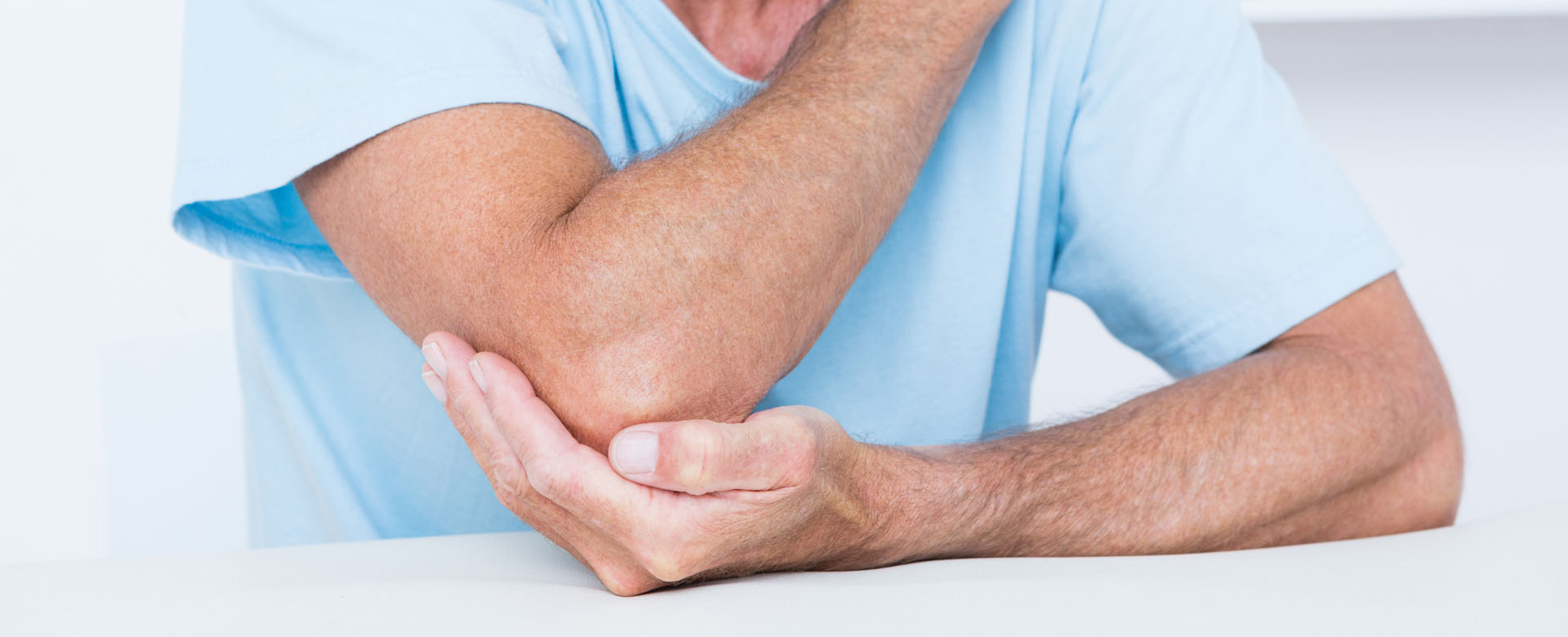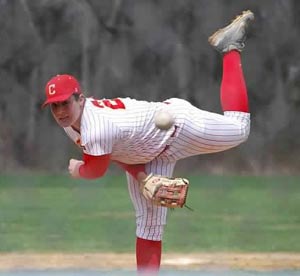Overview
Osteochondritis Dissecans of the Elbow
Osteochondritis Dissecans of the elbow, more commonly known as Capitellar OCD, involves a loss of blood supply to part of the cartilage within the elbow joint. When this cartilage ceases to perform its shock absorption duties, the elbow joint can become stiff, inflamed, and generally painful.
Your Capitellum is: A smooth, round, knob on the end of the humerus joined with the radius bone to form a hinge, with a shape similar to a knob and a cup.
Articular cartilage is: A slick, smooth material that protects bone ends from friction when they rub together. Articular cartilage is soft enough to act as a shock absorber.
The Facts on Capitellar OCD:
- The capitellum endures tremendous force with activities, like throwing a baseball or gymnastics.
- The repetitive force impacts a location of bone that has relatively weak blood supply. This causes the bone to weaken, crack, and without proper blood flow, not heal.
- Genetics play a role in determining who develops capitellar OCD.
- If a crack develops in the weakened capitellar bone, it may begin to separate, and chip away.
Symptoms:
These are the most common symptoms of Capitellar OCD:
- Pain on lateral (outside) elbow
- Stiffness
- Swelling
- Locking or catching sensations
Evaluation by Team Ahmad
Dr. Ahmad and his team of health professionals will greet you and start your visit with a discussion of your symptoms and your sport, level of competition, or desired activity level. Next, the doctor will exam your knee, focusing on:
- Pain points and reported levels of pain
- Your elbow’s tenderness, which he will apply pressure to assess
- Both of your elbows’ range of motion
If necessary, Dr. Ahmad may request an MRI so he may better estimate the size of the affected area and determine the stability of the bone and cartilage.
Treatment Options
If you are experiencing intense elbow pain and stiffness, you may have Capitellar OCD —do not continue using your elbow. Instead seek medical attention to determine the severity of your injury.
Non-surgical
Initially, athletes will need to stop their usual sport activities and give their elbow a much needed rest to enable the healing process to begin. If the right precautions are taken, and the severity is low enough, the following treatments are available:
- Anti-inflammatory medicines can reduce pain and swelling
- Icing the affected elbow can reduce swelling
- Physical therapy can help restore motion and strength
Surgical
Dr. Ahmad recommends surgery for more advanced stages of Capitellar OCD
- Arthroscopic treatment is used to safely remove loose pieces of bone and cartilage. Perforations are made into the bone to allow stem cells from bone marrow to heal the Capitellar OCD defects.
- The Graft method is used when the damage is extensive.
- It entails placing a graft into the defective area, and is capable of achieving better results than debridement and drilling.
- The graft is cylindrical plug of bone and cartilage that is placed into the defect.
- The graft will restore the normal function of the original articular cartilage.

Red circle indicates that capitellum making contact with the radius bone. This figure also orients the next few scope images. The red circle is what the camera is visualizing.

A pin is used to make perforations in bone.

Perforations in the bone allow marrow elements to gain access to the defect and stimulate healing.
Dr. Ahmad’s Experience
Dr. Ahmad is nationally recognized expert in capitellar OCD surgery has designed and studied the optimal methods to surgical repair capitellar OCD lesion. His undergraduate training in mechanical engineering has allowed him to research the optimal methods of treatment. Dr. Ahmad has performed several hundred elbow arthroscopies and capitellar OCD treatment in all types of patients from elite pitchers, middle school golfers, and Olympic development gymnasts.
Listed below is Dr. Ahmad’s scholarly articles and research published to help capitellar OCD treatment.
Dr. Ahmad’s Scholarly Publications related to Capitellar OCD
Peer Reviewed Scientific Journal Articles
Review Articles, Current Concept Articles and Surgical Techniques
Textbooks/ Guest Editorship
Book Chapters
Moderator for Scientific Sessions and Instructional Courses
Multimedia
National Research Podium Presentations Presented
Scientific Exhibit Presentations
- Mlynarek R, Weber A, Nepple J, Dines J, Li X, Ahmad CS, Bedin, A Scientific Exhibit #29: Approach to Diagnosis and Treatment of Shoulder and Elbow Pain in the Skeletally Immature Athlete, American Academy of Orthopaedic Surgeons Annual Meeting, Orlando, March 2016
Invited Instructional Course and Symposium Presentations
Invited Grand Rounds and Guest Lectureships
- Roosevelt Hospital Grand Rounds, Speaker, Elbow Throwing Injuries, New York, NY, December 20, 2011
- Detroit Metropolitan Course, Faculty, Adolescent Shoulder and Elbow Sports Medicine Injuries (Clinical), January 27, 2010
- Danbury Hospital Grand Rounds, The Throwing Athlete. Danbury CT, April 2009









